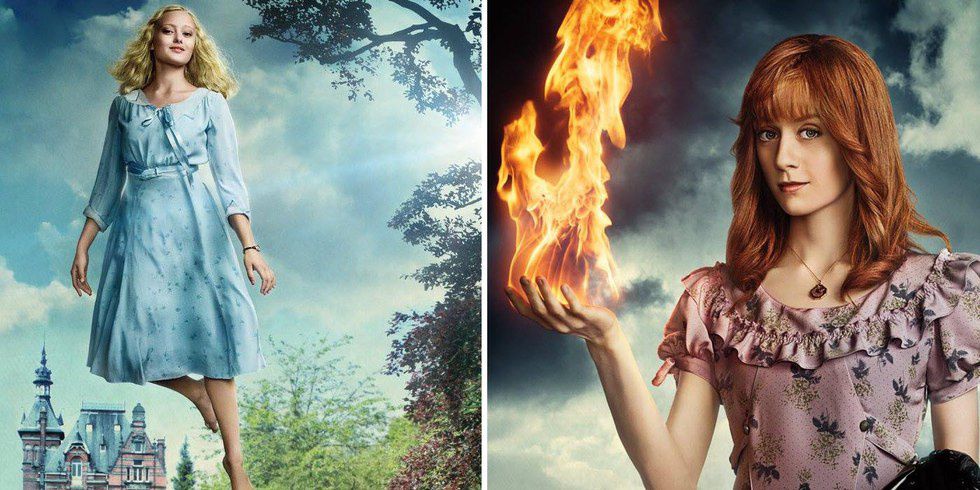Miss Peregrine’s Home for Peculiar Children was released on September 30th after much anticipation from fans of the bestselling book, written by Ransom Riggs. There are always issues when translating a popular novel to the big screen, but Tim Burton was seemingly the perfect director to accomplish this feat. While Burton is surely one of the only directors who could possibly bring such a magical, yet dark tale to life, it may have fallen short of expectations. With a wildly popular book such as this, it is impossible to please every fan and still leave room for the creativity of the director. In terms of cinematography, the movie displayed a lot of similarities shown in the style of Burton’s Alice in Wonderland; the main feature being the cross between dull, grey normalcy and the bright, vivid new world. The loop was absolutely beautiful when compared to Jake’s real time in 2016, which was significantly darker and gloomier.
The book and the movie opened almost exactly as the readers expected, just before Jake’s grandfather’s death. The main characters were similar to what the fans would’ve expected, especially the main character: Jacob Portman. The actor chosen for this role, Asa Butterfield, gave off the perfect boyish innocence, while still being able to encompass the courage and ferocity that made readers fall in love with Jake. The other characters were casted similarly to their descriptions in the book, except for a few minor changes in age. A major difference between the book and the film is the power swap between Emma Bloom, played by Ella Purnell, and Olive Abroholos Elephanta, played by Lauren McCrostie. Emma is the main female character in the books, as well as the movie, and her peculiarity is her ability to create fire with her hands. This power was given to Olive, who in the books was considered “as light as air.” She wore lead shoes to keep her grounded, as well as a rope to tie around her waist, which was meant to keep her from floating away. In the film, these features were transferred to Emma, leaving Olive with pyrokinesis. Hugh, Brownyn, Millard, Enoch, and all of the other children were present with their same peculiarities from the book.
Burton made some major alterations for the on-screen rendition. For starters, the Hollowgasts, who literally eat the eyeballs of peculiars and will kill anything in their path, are supposed to be so completely and utterly terrifying that one is afraid to sleep at night. This was not the case in the film. The Hollowgasts were creepy, but far from terrifying. A Hollowgast that consumes enough peculiars is turned into a Wight. The Wights were represented as they are described in the book: Humans with completely white eyes. The film’s used of Samuel L. Jackson as Barron, the head Wight, was less terrifying as it was comic relief. Jackson’s character literally says, “I spent three months in Florida. Have you ever been to Florida?” His tone is sarcastic as he describes his time spying on Jake. While a few of Jackson’s comments lightened the mood of the movie, it does not remove the fact that he was not terrifying in the slightest. The plot line of the movie was pretty much spot on, up until the point where the book ended, in which Burton drove the movie into uncharted territory.
Spoilers Below:
In the book, Dr. Golan was male. He was a prominent character in the books because Jake was very open with his psychiatrist in the aftermath of his grandfather’s death. In the movie, Dr. Golan was female, which was an excellent touch in displaying the power of Barron. For those who read the book, it was evident that Dr. Golan was untrustworthy, but the movie did an excellent job of concealing Dr. Golan’s identity as truly being Barron, who has the ability to shape-shift.
Finally, the ending was completely different from the book. The book closes with the peculiars sailing off into the sunset as they begin their journey in search of Miss Peregrine, who has been abducted by the Hollowgasts. In the book, this left the readers on the edge of their seats, anxiously waiting for the next book to be released. When this point came in the movie, which was incredible cinematography by the way, the movie continued right into the battle between the Hollowgasts, Wights and Peculiars. This was met with mixed reactions from fans of the book. It was an interesting concept, yet the execution left the fight scene crunched into a small time frame. While Burton used this as a tool to bring the movie full circle, the movies could’ve be spaced out into a trilogy, just like the books. Which, by the way, is still completely possible based on character development. The film closed in a neat little package with Emma and Jake back together, post-battle, in 1946.
Tim Burton, by all accounts, is an excellent director and translating a novel to the big screen is never an easy task. While Burton put his own spin on the story, he was able to maintain a similar plot line overall until the end of the film. The trilogy was created in a way that left the reader in suspense at the end of each book. Judging by the way Burton ended the film, a sequel is definitely a possibility, but not completely necessary. While Burton's decision left the movie neat and together in the event that a sequel was not possible, the readers were definitely expecting a trilogy. Rushing the final battle into the first movie left the storyline a little too condensed, rather than building a strong foundation for the next two films. Overall, Tim Burton is quite frankly the only director that could've translated this novel to the big screen and it is definitely worth watching. For fans of the books, leave your ideas at the door and enjoy a new, innovative perspective.
























